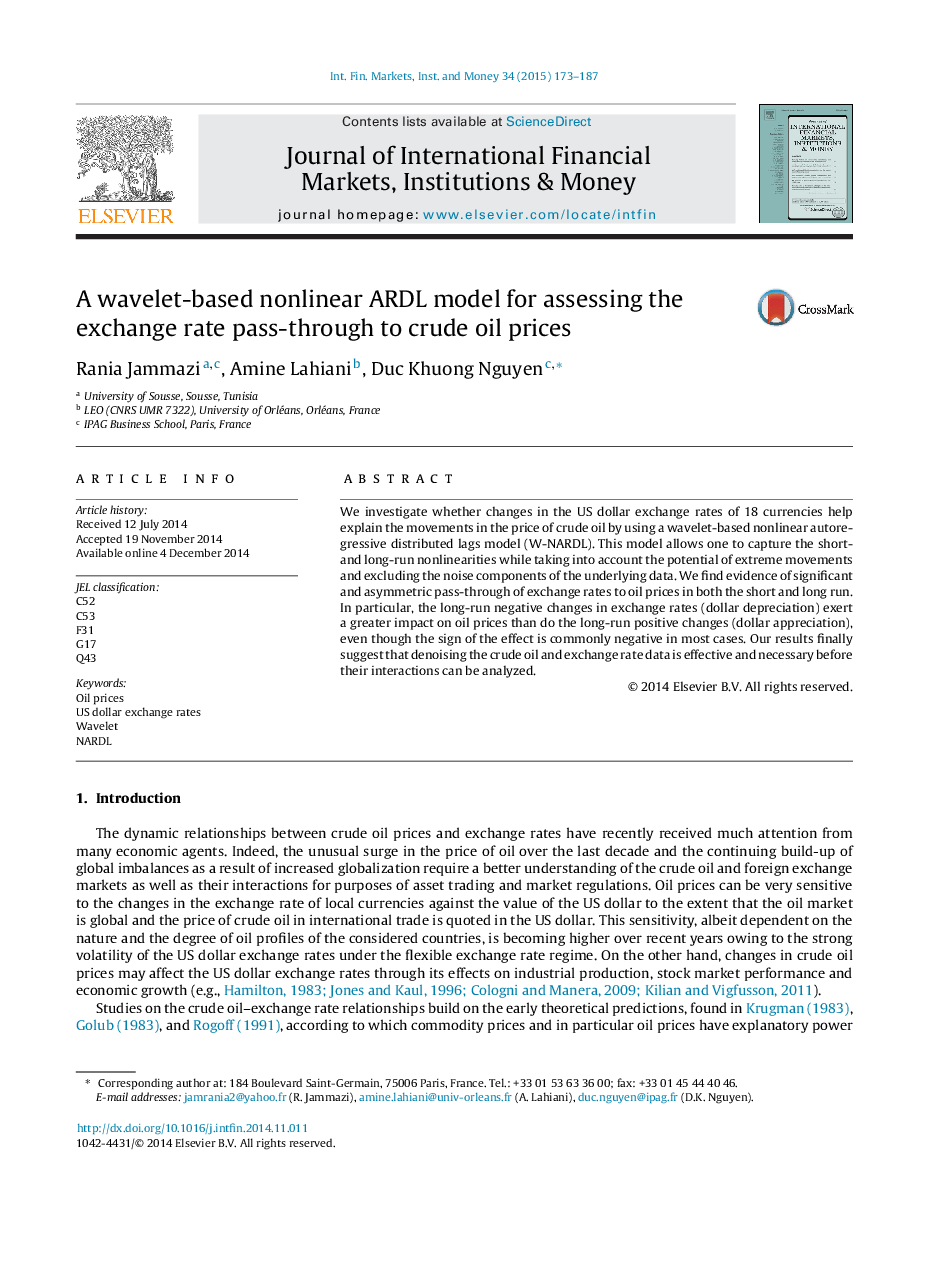| Article ID | Journal | Published Year | Pages | File Type |
|---|---|---|---|---|
| 7364733 | Journal of International Financial Markets, Institutions and Money | 2015 | 15 Pages |
Abstract
We investigate whether changes in the US dollar exchange rates of 18 currencies help explain the movements in the price of crude oil by using a wavelet-based nonlinear autoregressive distributed lags model (W-NARDL). This model allows one to capture the short- and long-run nonlinearities while taking into account the potential of extreme movements and excluding the noise components of the underlying data. We find evidence of significant and asymmetric pass-through of exchange rates to oil prices in both the short and long run. In particular, the long-run negative changes in exchange rates (dollar depreciation) exert a greater impact on oil prices than do the long-run positive changes (dollar appreciation), even though the sign of the effect is commonly negative in most cases. Our results finally suggest that denoising the crude oil and exchange rate data is effective and necessary before their interactions can be analyzed.
Related Topics
Social Sciences and Humanities
Economics, Econometrics and Finance
Economics and Econometrics
Authors
Rania Jammazi, Amine Lahiani, Duc Khuong Nguyen,
